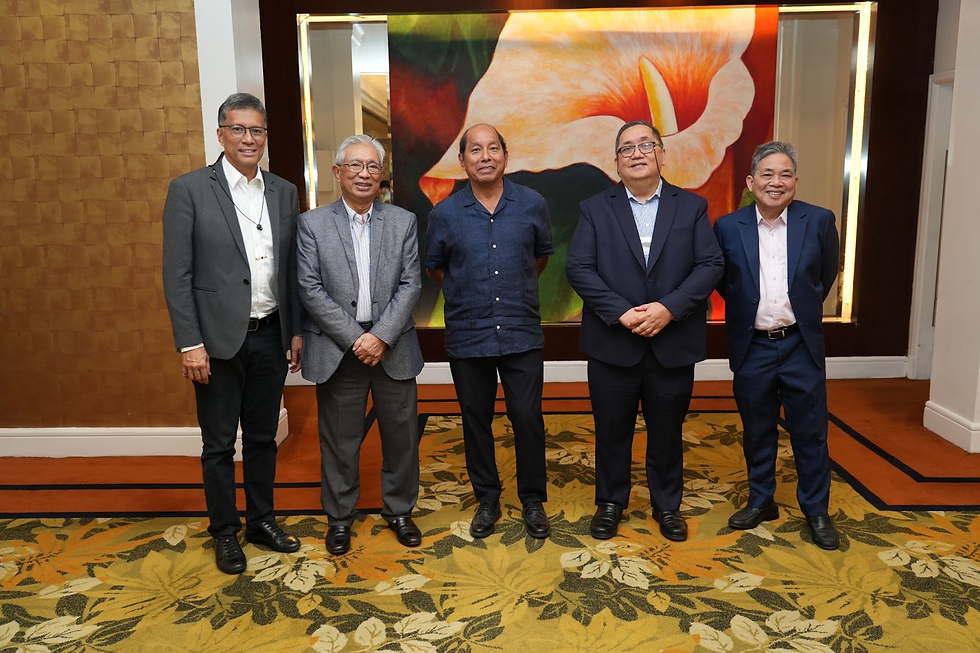STEPPING UP AND TONING DOWN – DIFFERENT DOSAGE OF COMPETITION FOR SECTORAL BENEFITS
- Action for Economic Reforms
- Nov 22, 2014
- 4 min read
“With the Quantitative Restriction (QR) on import of rice, expected to be abolished in July, 2017, in the Philippines, it is a need of the hour to work out an interim strategy to build the capacity of domestic farmers and other actors to face international competition,” claimed Dr. Roehlano Briones, Senior Fellow, Philippines Institute for Development Studies in the third National Reference Group meeting held under the CREW project in Manila, Philippines on 30 October, 14. The objective of the meeting was to discuss the key findings of the Philippines Diagnostic Country Report (DCR) and crystallise a national advocacy plan.
Using the Total Welfare Impact Simulator for Trade (TWIST), a model for economic surplus analysis, Dr. Briones simulated two scenarios in the rice sector: first, free trade scenario and second, with the import quota.
For the free trade scenario, the model suggested that rice imports in 2013 would have been 3.8 billion tons higher than the actual 404,702 tons. In such a scenario, the average retail price of rice at PHP[1] 33.70/kg would drop to equal the border price of PHP 19.8/ kg. Furthermore, the consumer surplus will rise by PHP 178 billion, more than offsetting the PHP 34 billion and PHP 5.6 billion decline in the producer surplus and the importer’s revenue respectively, resulting in a consumer surplus of PHP 138 billion (or over USD 3 billion).
Whereas, in the second situation with relaxed import quota, where imports were allowed to reach 1 million tons against the actual 404,702 tons in 2013, the model suggests that retail prices would fall by PHP 2.18 per kilogram. Consumer surplus would go up by PHP 25.7 billion, while producer (farmer) surplus would fall by P6.6 billion. Importers, on the other hand, would gain by PHP 6 billion. On the aggregate the economy would benefit by PHP 25 billion.
To summarise, Dr Briones explained that pursuing a free trade regime in the rice sector will lead to an aggregate benefit of over USD 3 billion. However, as the farmers have been protected from international competition and at the same time, have received limited investment, they are unprepared for liberalisation. Further, along with the farmers, the millers and other members of the rice value chain are also expected to face losses. Hence, with the expected opening up of the import market it is essential that the same be done with safety nets to ensure protection of farmers and other stakeholders. This calls for an interim strategy that should be the focus of the Philippines government especially since the QR is likely to not be renewed.
In the bus transport sector, on the other hand, the bone of contention was cut throat competition, rather harmful competition in an arterial patch in Metro Manila, referred to as EDSA (Epifanio de los Santos Avenue). Dr. Sonny Domingo, PIDS, and researcher for the bus transport sector explained that the loss due to traffic congestion faced in the Philippines is about PHP 5.5 billion per year. Furthermore, if an effective decongestion policy is brought in place, the same will result to a net present value of PHP 13.3 billion in three years and PHP 19.8 billion in six years. “It is crucial to cut vehicular flow of traffic through traffic management and accomplish infrastructure and competition reforms in the bus transport sector,” stated Mr. Domingo.
The sector has suffered a failure in terms of policy implementation and the high number of operators and buses have made it more difficult to discipline the sector. Dr. Domingo suggested revisiting the Martial Law where the bus operators were clubbed into agglomeration in order to make them accountable and easy to regulate. The agglomeration could have a monopoly in their zones where they would follow the policy of self-policing. Tony Salvador, IDEALS, confirmed the idea and mentioned that the same could also include the element of scheduled franchise licenses, where the licenses would carry the schedule, station and timings for the buses.
The meeting concluded with strong take aways in terms of the advocacy. It was decided that in the rice sector, a competitiveness package would be chalked out to prepare the rice chain for international market and the role of National Food Authority which holds the import monopoly would be revisited. While, in the case of bus transport sector, it was decided that the probable application of Marshall Law (1970s) and ways to cut down the number of buses and effective implementation decongestion rules will be looked. Neha Tomar, CUTS International remarked that the case of the Philippines was interesting as while in one sector we are strategically trying to instil healthy competition, in the other sector, we are trying to translate cut throat competition regulated competition.
Dr. Adoracion Navarro, Senior Research Fellow of PIDS, added that in a congressional hearing to consolidate legislative proposals and bills on competition policies in Congress she attended, “the emerging consensus is that the Competition Authority will regulate the exercise of market power.” She added that the authority “will look into possible abuses by existing monopolies or existing dominant players in the different industries.” “The possible role of the Department of Justice – Office on Competition is still being reviewed. There is a view that the office can evolve into the Competition Authority, but there is also a view that this might be risky.”
NRG members agreed that the way to move forward is to create a government body for competition in the Philippines. “That is the rising consensus,” Prof. Sta. Ana, Action for Economic Reforms said.

For more information, please contact: Roehleano Briones: rbriones@mail.pids.gov.ph , Men Sta Ana: filomenoiii@yahoo.com, Neha Tomar: nt@cuts.org
[1] PHP – Philippines Peso (PHP 1 = USD 0.022)



